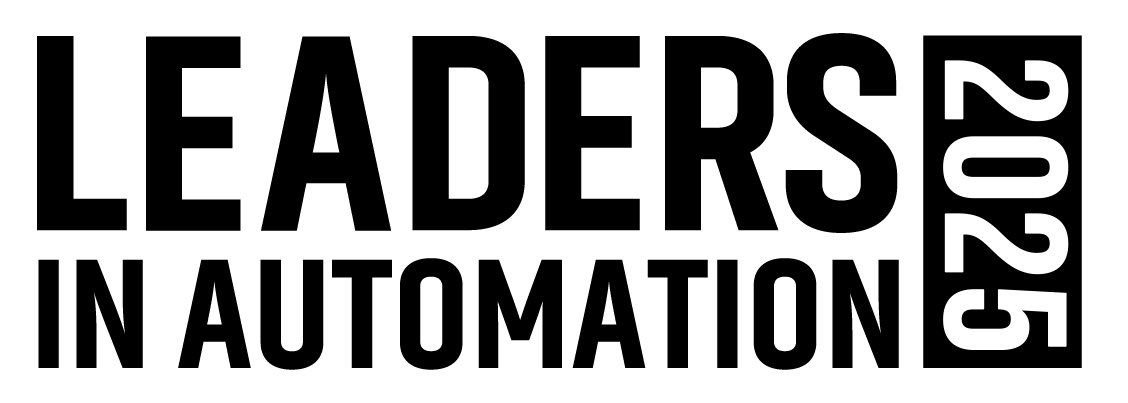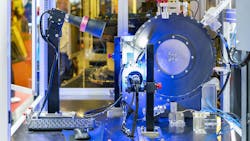AI-Powered Quality: Transforming Manufacturing from Design to Compliance
Why this article is worth reading:
- By moving beyond traditional defect detection to prevention-focused systems that use vision AI and large language models, AI enables manufacturers to inspect products with greater precision and speed than humanly possible.
- Predictive maintenance and reliability improvements are being achieved through AI analysis of historical failure data, usage conditions and sensor feedback, allowing manufacturers to prevent breakdowns before they occur and simulate long-term performance in virtual environments.
- Compliance automation and workflow optimization are being transformed by generative AI tools that can analyze vast volumes of regulatory documents and unstructured data, with real-world examples showing manual processes that took six to 12 months now being completed in near real-time.
Companies of all types are embracing AI in distinct ways. Perhaps no other industry is moving as fast as manufacturing. Coming from the experiences of Lean Manufacturing and Six Sigma process changes, manufacturers are looking at AI technologies as the new frontier for achieving positive business outcomes. More specifically, manufacturers are embracing AI to enhance quality across the entire product lifecycle, from initial design to long-term reliability and workflow improvement.
With AI technology, quality control is no longer just about catching defects. It’s about preventing defects before they happen and optimizing key stages of production and commercialization. Following is a look at how AI is transforming the quality control process from design to long-term reliability.
Design with AI-driven engineering
At the design stage, AI-powered tools integrated with CAD systems are reshaping how engineers create new products. These AI solutions introduce vision AI into product designs and extend to analysis of vast datasets, including historical design performance, material properties and real-world failure modes. With these insights, manufacturers can consider suggested design improvements before prototyping even begins. Building on CAD applications such as Creo from PTC and SolidWorks from Dassault Systems, AI can identify structural weaknesses, recommend alternative materials and even automate aspects of the design process, reducing the need for costly iterations.
Integrated prompt chaining and adaptive retrieval-augmented generation (RAG) pipelines allow the system to learn continuously from operator feedback and edge cases, making inspections more accurate and resilient to variation and drift.
Beyond CAD, AI is embedded in product lifecycle management (PLM) applications, where it provides a comprehensive view of a product’s journey from concept to retirement. PLM applications, such as Windchill, are common applications involved in these solutions. By leveraging AI on top of PLM systems, manufacturers can extract insights from past product launches, analyze performance trends and predict potential quality issues before production begins. This ensures that lessons learned from previous designs directly inform future innovations, resulting in stronger, more reliable products.
AI-powered quality control
Once products move into production, AI-driven quality control systems can take over. These systems typically use vision AI and large language models (LLMs), multi-modal prompting and chained workflows to inspect components and finished products with precision and speed beyond human capability. High-resolution cameras and sensors capture images of manufactured parts, while AI instantly recognizes any concerning patterns and identifies subtle defects such as surface imperfections and misalignments. Vision AI and LLMs can also generate adaptive work instructions and contextualize information coming in from across engineering and operations.
These models are running on edge computing devices and, depending on the plant requirements, include models such as Microsoft’s Phi-3 and Mistral’s 3.1 Small. Their integrated design offers the advantage of achieving local vision processing without internet latency or delays — an essential aspect for plant production lines that must avoid downtime.
Some manufacturers are taking inspection even further by integrating AI-powered defect grading into their quality departments. Here, instead of just flagging defects, these systems categorize and rank issues based on severity and frequency. Microsoft AI Data Cloud tools enable these AI solutions, using tools and services such as Azure OpenAI GPT-4o/GPT-4o-mini, Azure AI Foundry, Azure Data Factory, Azure SQL Server and Microsoft PowerBI for visualization of the data classification output. Manufacturers can pinpoint systemic problems, refine their production processes and triage compliance issues in heavily regulated industries, improving overall efficiency.
Transforming quality in real time
At Stellar, we have had the chance to work with manufacturers to implement critical operational AI initiatives. Recently, we worked with a gasket manufacturer to deploy vision AI powered by generative models to inspect production line images for surface defects, edge irregularities and material inconsistencies.
Building on CAD applications, AI can identify structural weaknesses, recommend alternative materials and even automate aspects of the design process, reducing the need for costly iterations.
Unlike traditional machine learning systems that rely on fixed rules or narrowly trained models, our approach used LLMs with multi-modal reasoning to interpret a variety of gasket types, even low-shot examples or new designs. Integrated prompt chaining and adaptive retrieval-augmented generation (RAG) pipelines allow the system to learn continuously from operator feedback and edge cases, making inspections more accurate and resilient to variation and drift.
This generative approach enables real-time, continuously self-improving quality control, reducing false positives, improving defect detection accuracy and eliminating the need for handcrafted inspection rules.
Predicting failure and enhancing reliability with AI
AI doesn’t just improve real-time quality control. It also redefines reliability departments by predicting part failures before they occur. AI can identify patterns that indicate potential breakdowns by analyzing historical failure rates, real-world usage conditions and sensor feedback. These insights allow manufacturers to implement predictive maintenance strategies to reduce downtime and minimize costly recalls and repairs.
These insights from AI also inform future product development and testing by highlighting weak points in existing designs. Instead of relying solely on traditional failure testing, engineers can use AI to simulate long-term performance in virtual environments. This data helps manufacturers build more durable products, improving customer satisfaction and reducing warranty claims.
Generative AI tools also have built-in enterprise-grade security and governance that allows for knowledge to be safely shared to bridge gaps and solve problems with a degree of speed and accuracy that was previously out of reach.
Workflow automation and regulatory compliance
Beyond these design, quality and commercialization benefits, generative AI driven by LLMs are proving to be a boon for increasing efficiency and reducing the costs of manufacturing compliance — particularly in some of the most highly regulated industries such as medical devices.
This new, AI-driven workflow replaced a six to 12-month manual backlog with near real-time processing, reducing labor costs and mitigating compliance risk.
Advanced vector databases not only read manufacturer images and CAD models to automate design and quality verification, they can also analyze large volumes of compliance documents and unstructured data. AI tools can capture and reason over various streams of feedback on regulated products, assess severity of compliance lapses, improve regulatory interpretation, streamline internal audits and automate manual, time-intensive documentation tasks.
Consider a global device manufacturer operating in more than 160 countries that receives calls from a field support network about service issues that often require compliance reporting. The high volume of unstructured audio and text data generated by these calls is derived from multilingual and non-technical users, making it especially challenging and time-consuming to identify reportable issues and extract root-cause insights.
By combining LLM-powered generative AI, machine IoT logs and traditional machine learning classification models, Stellar created a system that analyzes conversations, matches them with device telemetry and automatically classifies issues for regulatory reporting. This new, AI-driven workflow replaced a six to 12-month manual backlog with near real-time processing, reducing labor costs and mitigating compliance risk. It also allowed human experts to focus more on product quality, training gaps and supplier issues. This solution continues to learn, with fine-tuned and RAG-augmented models to ensure consistency, accuracy and compliance auditability on a global enterprise scale.
Creating a smart part system
An electrical power unit manufacturer and customer of Stellar had more than 10,000 CAD drawings as unstructured design files. Accessing and using these files required manual effort and bogged down attempts at design acceleration. We combined vision AI, LLM-powered reasoning and RAG-based retrieval models to turn the files into a structured, searchable design inventory. By converting unstructured design files into smart part records with automated part number recognition, the manufacturer could use a drag-and-drop design method that removed the delays connected to the manual process.
Future iterations of this solution will incorporate comparisons of components against local utility codes (e.g., IEEE, NEC, NFPA 70) and regional electrical standards to streamline regulatory approvals and ensure end-to-end compliance.
Zach Linder is chief operating officer at Stellar.
More AI-powered quality insights from Automation World:
About the Author

Leaders relevant to this article:

